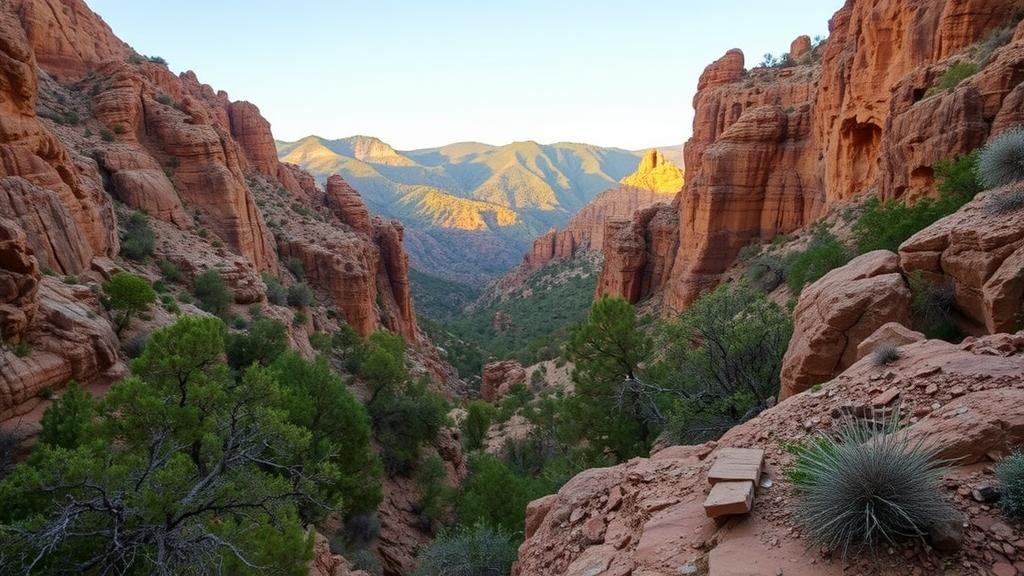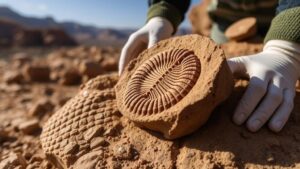Searching for fluorite deposits in the rugged canyons of the Gila Wilderness.
Searching for Fluorite Deposits in the Rugged Canyons of the Gila Wilderness
The Gila Wilderness, located in southwestern New Mexico, is renowned not just for its breathtaking landscapes but also for its geological treasures, including brilliant fluorite deposits. For rockhounds and mineral collectors, the quest for these striking crystalline formations offers both adventure and the opportunity to deepen their understanding of mineralogy in a remote, rugged environment. This article explores where to find fluorite in the Gila Wilderness, the geological factors that contribute to its presence, and practical tips for a successful collecting experience.
Understanding Fluorite and Its Geological Significance
Fluorite, a mineral composed of calcium fluoride (CaFâ‚‚), is celebrated for its vibrant colors and cubic crystal structure. This mineral can appear in shades of purple, green, yellow, blue, and colorless forms and exhibits a notable fluorescence when exposed to ultraviolet light. Geologically, fluorite often forms in hydrothermal veins and is commonly associated with other minerals such as quartz, calcite, and barite.
The Gila Wilderness is home to various geological formations that create the perfect conditions for fluorite deposition, including:
- Intrusive igneous rocks: The presence of granite and other igneous rocks allows for the circulation of mineral-rich hydrothermal fluids.
- Metamorphic rock formations: The high-pressure conditions in these areas contribute to the formation of veins that can host fluorite.
Key Locations for Fluorite Collecting
When venturing into the Gila Wilderness, specific locations have proven fruitful for collectors seeking fluorite. Notable areas include:
- Black Range: This region features abundant quartz veins alongside fluorite deposits, particularly near ghost towns like Chloride and Kingston.
- Gila River Canyon: The canyons steep cliffs expose metamorphic rock formations, making it a prime site for mineral exploration.
- Gila Hot Springs: Nearby hydrothermal activity can lead to the deposition of fluorite in the surrounding areas.
Before setting out, ensure you have researched specific sites for accessibility and any necessary permits for mineral collecting.
Practical Tips for Collecting Fluorite
To ensure an effective and safe collecting experience, consider the following tips:
- Gear up: Wear sturdy hiking boots, gloves, and protective eyewear. A good geology hammer, chisels, and a pick will facilitate mining efforts.
- Map your route: Use topographic maps or GPS devices to navigate the rugged terrain, especially since cell service may be spotty.
- Time your visit: The best times to explore are during the spring or fall when temperatures are milder, and conditions are less hazardous.
- Respect the land: Follow Leave No Trace principles to minimize your environmental impact. Collect only what you need and leave larger specimens for others to enjoy.
Geological Challenges and Considerations
While the Gila Wilderness offers opportunities for fluorite collection, it is essential to be aware of the challenges involved. The rugged terrain can be treacherous; hikers may face steep inclines, loose rocks, and sudden weather changes. Hydration and physical preparedness are paramount.
Also, awareness of geological formations is vital. Rockhounds must be able to distinguish between fluorite and similar-looking minerals. Notably, fluorite may be confused with other transparent to translucent minerals such as calcite or barite, so collectors should value thorough identification and proper field techniques.
Real-World Applications of Fluorite
Fluorite plays a significant role beyond aesthetics. Its main industrial applications include:
- Metallurgy: Fluorite is used as a flux in the production of aluminum, iron, and steel, improving the efficiency of smelting processes.
- Chemicals: It is a key ingredient in the production of hydrofluoric acid, which is critical for various chemical processes, including the manufacturing of Teflon.
These applications highlight the importance of fluorite not only as a collectible but also as a valuable resource within various industries.
Conclusion
Searching for fluorite deposits in the Gila Wilderness can be a rewarding experience for rockhounds and mineral collectors alike. With its stunning landscapes, rich geological history, and abundant resources, the Gila Wilderness provides a unique opportunity to engage with nature and discover the beauty of fluorite. By following the tips outlined in this article, collectors can maximize their chances of finding this extraordinary mineral while respecting the delicate ecosystems that define the Gila Wilderness.



